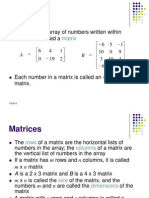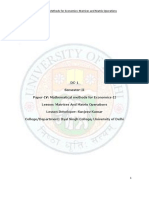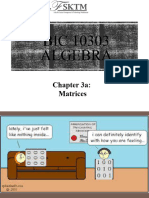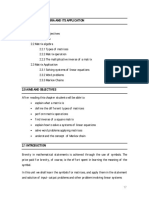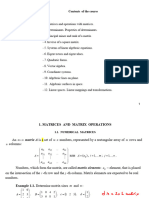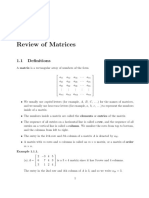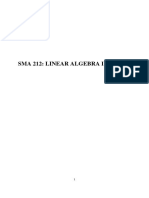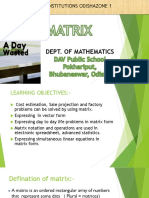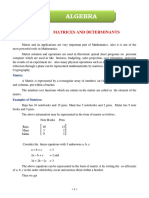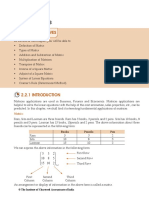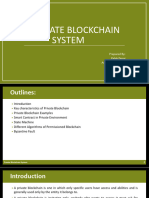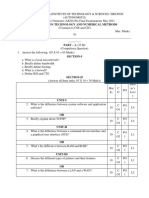0% found this document useful (0 votes)
27 views20 pagesLecture 7 Matrix Part 1
The document provides an overview of matrices, including their definitions, operations such as addition, subtraction, and multiplication, as well as concepts like zero matrices, identity matrices, and inverse matrices. It outlines the properties of matrix arithmetic and illustrates examples of matrix operations. Additionally, it introduces the Gauss-Jordan elimination method for finding inverse matrices.
Uploaded by
quocphuongtri.pham.cspsCopyright
© © All Rights Reserved
We take content rights seriously. If you suspect this is your content, claim it here.
Available Formats
Download as PDF, TXT or read online on Scribd
0% found this document useful (0 votes)
27 views20 pagesLecture 7 Matrix Part 1
The document provides an overview of matrices, including their definitions, operations such as addition, subtraction, and multiplication, as well as concepts like zero matrices, identity matrices, and inverse matrices. It outlines the properties of matrix arithmetic and illustrates examples of matrix operations. Additionally, it introduces the Gauss-Jordan elimination method for finding inverse matrices.
Uploaded by
quocphuongtri.pham.cspsCopyright
© © All Rights Reserved
We take content rights seriously. If you suspect this is your content, claim it here.
Available Formats
Download as PDF, TXT or read online on Scribd
/ 20


